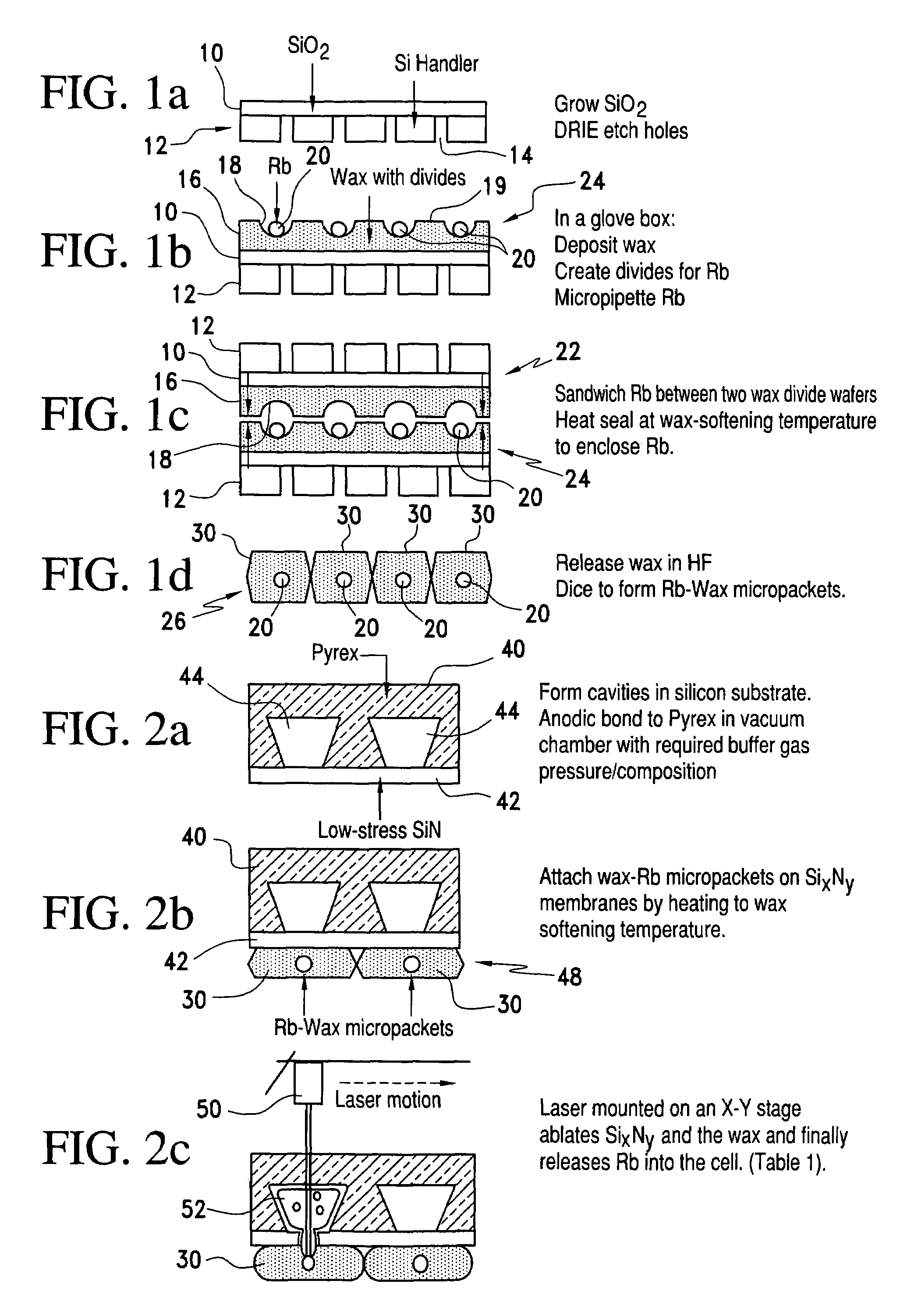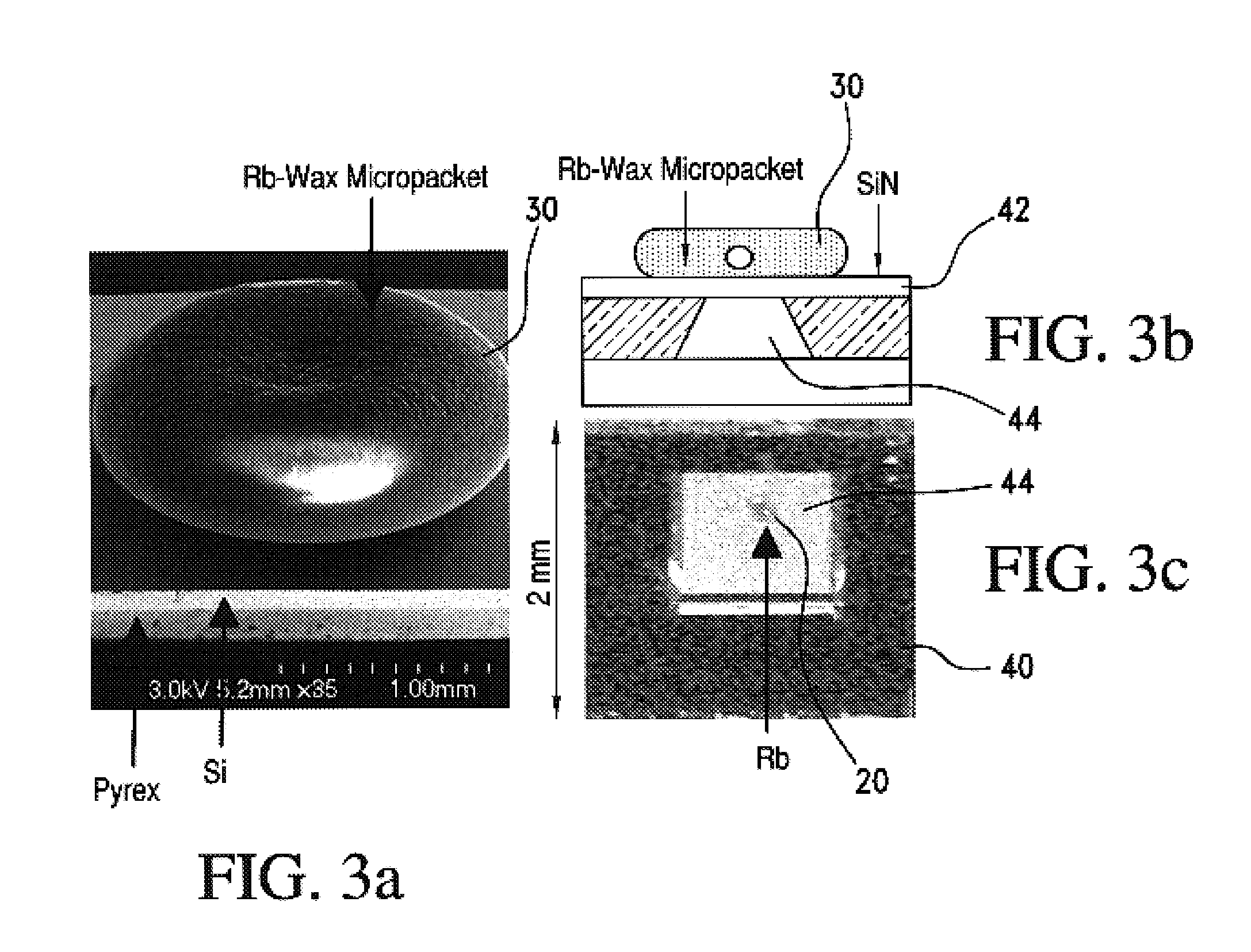Alkali metal-wax micropackets for alkali metal handling
a technology of alkali metal and micropackets, which is applied in the direction of paper/cardboard containers, envelopes/bags making machinery, active medium materials, etc., can solve the problems of unintentional interference, gps receivers are highly susceptible to intentional jamming signals, and the power of satellite signals is extremely low, so as to increase the coherence lifetime of alkali metals. the effect of fast and effectiv
- Summary
- Abstract
- Description
- Claims
- Application Information
AI Technical Summary
Benefits of technology
Problems solved by technology
Method used
Image
Examples
Embodiment Construction
[0048]Turning now to a more detailed description of the invention, the process for Alkali-Metal Wax Micropacket Fabrication, FIGS. 1a-1d schematically outline the sequence of process steps to form alkali metal wax micropackets.
[0049]Referring to FIG. 1a, a 1 μm thick layer of silicon dioxide (SiO2) 10 is deposited on a 4-inch silicon wafer 12 used as a handle substrate. Through-wafer holes 14 are etched through handle substrate 12 using deep reactive ion etching (DRIE) on the back side to serve as etch holes for the release process.
[0050]A thin uniform layer of wax 16 is deposited on top of the SiO2 layer 10 in the following way. The handling wafer 12 is placed on a hotplate with a level surface inside a nitrogen ambience glove box with low levels of oxygen and humidity within a few part per million. A measured amount of solid wax 16 is placed on the wafer 12, melted and spread using a microscope glass slide. The wafer is held above the melting point for a few minutes and rapidly co...
PUM
| Property | Measurement | Unit |
|---|---|---|
| temperature | aaaaa | aaaaa |
| temperature | aaaaa | aaaaa |
| temperature | aaaaa | aaaaa |
Abstract
Description
Claims
Application Information
 Login to View More
Login to View More - R&D
- Intellectual Property
- Life Sciences
- Materials
- Tech Scout
- Unparalleled Data Quality
- Higher Quality Content
- 60% Fewer Hallucinations
Browse by: Latest US Patents, China's latest patents, Technical Efficacy Thesaurus, Application Domain, Technology Topic, Popular Technical Reports.
© 2025 PatSnap. All rights reserved.Legal|Privacy policy|Modern Slavery Act Transparency Statement|Sitemap|About US| Contact US: help@patsnap.com



